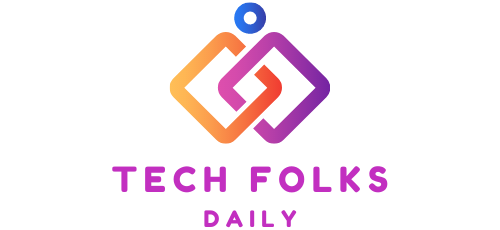4 IT Management Tools That Your Team Can’t Miss
Today, IT management goes through a mix of automation, process optimization, and outsourcing. The first two elements depend on the tools that IT teams have at their disposal. Let’s see the essential ones.
Although IT management has always been vital in every organization, in the last decade, companies have focused the growth of their business on technological innovation, and IT has found itself playing in an increasingly strategic position for the company’s future. While maintaining its role as guarantor of corporate business continuity, today, IT is also the pivot around which business innovation and agility initiatives revolve, essential in increasingly uncertain and changing market contexts.
Furthermore, the very strong digitization has greatly increased the pressure on IT teams, which today have to guarantee the performance of increasingly complex technological environments: on-premise systems, applications to be modernized, exponentially growing external (and internal) threats, multiplication of devices, hybrid cloud models to govern, and SaaS software to integrate with existing platforms create pressures that are difficult to manage with limited resources.
The solutions: the right toolkit and outsourcing
In the context just described, modern IT management must recognize two pillars: the right tools and outsourcing. Starting from the latter, outsourcing is the basis of the business model of Managed Service Providers, which relieves the company of critical operational elements by guaranteeing skills and tools that the company struggles to find. Outsourcing can be total or partial or related to some areas of IT operations, such as security, or inclusive of the entire IT environment.
The second theme is that of IT management tools. The era of Excel, notepad, notes, and phone calls have passed; today, IT teams need advanced tools – often delivered as Cloud services – to manage all the facets of modern environments. The increasing pressures on teams mean that they must optimize processes, avoid falling into inefficiencies, organize themselves in the best possible way, and, as far as possible, take advantage of automation—tools which, moreover, are the same as the MSPs, albeit in a different business context.
IT management is vast, but four pillars cannot be missing in a company that wants to be productive and effective in the market.
Visibility is key: Remote Management & Monitoring.
Remote management & monitoring tools are the basis of IT management, both from the point of view of an MSP and an internal IT team. The teams must simultaneously manage hundreds of PC, notebooks, servers, smartphones, networks, and devices, which is only possible with intelligent automation. As mentioned, environments become increasingly complex over time, and ensuring their visibility is the starting point of any IT management activity.
Remote management & monitoring tools ‘ holistically’ monitor the IT environment with a very fine level of detail: check all client updates, hardware status, installed software, resource usage, running processes, etc., to identify items worthy of attention and proactively report them to the team, which consequently can focus on what matters without wasting attention on routine activities and common problems that can be automated with self-healing procedures.
Remote Management & Monitoring provides visibility into IT environments, a concept often occurring in IT management. Log management, which companies implement mainly for compliance issues, is based on transparency and the monitoring and improvement of software performance (APM, Application Performance Monitoring), which flows into the modern concept of ‘observability.’
An IT document management software
The digitization of document management is more than just a concept applicable to business processes and the progress toward green and paperless companies. The larger the size of the IT environments, the more you need a centralized repository – better if accessible in the cloud – which brings together all the information useful for system management. We speak not only of ” documentation ” in the strict sense but of configurations to be replicated on the machines, of user accounts (and passwords), of certificates, of the status of domains and licenses, of contracts to be controlled, managed, and archived in compliance with the law.
More than any other division, IT management is at significant risk of fragmentation. Multiple systems, folders, ways to manage procedures, excel sheets, and notes break down shared knowledge and concentrate it on individual resources. But they can leave the company at any moment: an IT document management platform gives a competitive advantage to small and medium-sized companies and is vital for large ones.
IT Management: Impossible to do without a ticketing system
Also, regarding ticketing systems, the point of view of the MSP and internal IT teams is different, but the tools are the same, as there is no difference between an internal and external customer. It is always about managing and solving problems whose causes the end user ignores and which often require procedures to be managed correctly.
A modern system is not limited to archiving and cataloging requests correctly. Still, it sorts them to the most suitable operators, initiates workflows that require the involvement of several professionals, monitors their progress, manages performance KPI, implements forms of self-service assistance (such as chatbots or Q&A pages), and is also able to provide suggestions (based on AI) for the fastest and most efficient solution of cases.
Vulnerability Assessment and MDM solutions
Security is another essential element of IT management, regardless of the size of the company. Teams should equip themselves with vulnerability assessment tools, i.e., tools that collect information from all devices, software, and equipment in the IT environment to detect (and correct) vulnerabilities that malicious agents can exploit to penetrate systems and steal valuable data.
Also, in this case, the efficiency element is automation: the Vulnerability Assessment software autonomously acquires the updates of the CVE lists (Common Vulnerabilities and Exposures), consequently checking the vulnerabilities present in the environment and implementing defined remediation procedures by special rules. It’s a similar story with Mobile Device Management systems, which have been in the spotlight since hybrid and smart ways of working became the norm. They allow you to monitor and manage hundreds and thousands of mobile devices, ensuring their security: for this reason, they are mainly used by large enterprises.
The value of outsourcing
Regardless of the solutions deployed in practice, IT teams must master different systems and platforms. Pervasive digitalization of business, smart working models, and external circumstances such as cyber threats are not helping. The available media meet the needs of professionals with automation and optimized user experiences, but specialized skills are still required to master the entire ecosystem. This is why entrusting the management of your IT environments or specific services to dedicated partners is, in many cases, the best viable option. Undoubtedly the most efficient.
Also Read : Put Email Security First With Email Security Tools




